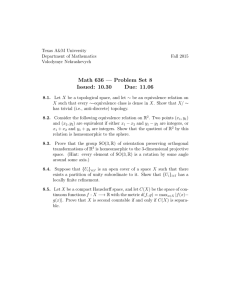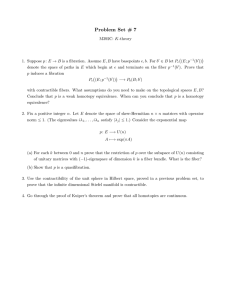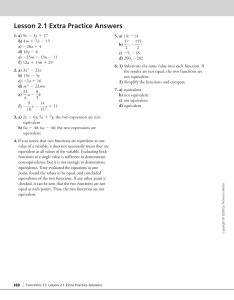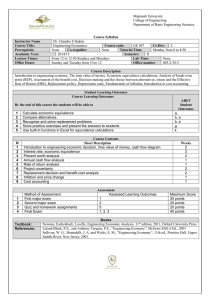Math 336 HW #4
advertisement
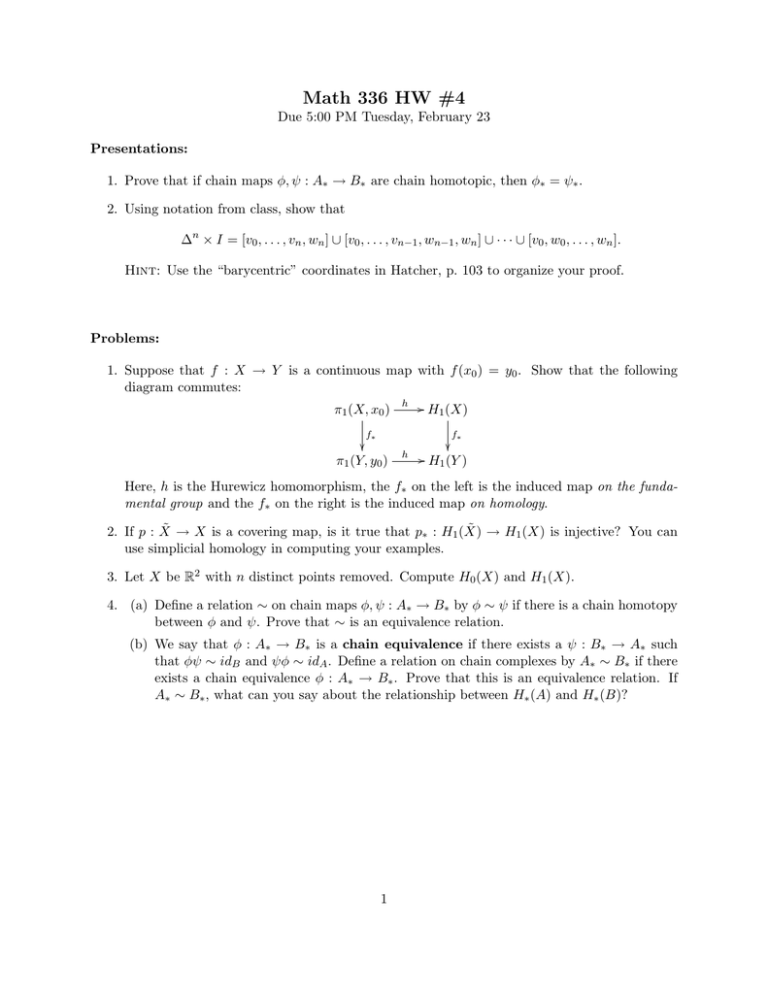
Math 336 HW #4 Due 5:00 PM Tuesday, February 23 Presentations: 1. Prove that if chain maps φ, ψ : A∗ → B∗ are chain homotopic, then φ∗ = ψ∗ . 2. Using notation from class, show that ∆n × I = [v0 , . . . , vn , wn ] ∪ [v0 , . . . , vn−1 , wn−1 , wn ] ∪ · · · ∪ [v0 , w0 , . . . , wn ]. Hint: Use the “barycentric” coordinates in Hatcher, p. 103 to organize your proof. Problems: 1. Suppose that f : X → Y is a continuous map with f (x0 ) = y0 . Show that the following diagram commutes: π1 (X, x0 ) h f∗ π1 (Y, y0 ) h / H1 (X) f∗ / H1 (Y ) Here, h is the Hurewicz homomorphism, the f∗ on the left is the induced map on the fundamental group and the f∗ on the right is the induced map on homology. 2. If p : X̃ → X is a covering map, is it true that p∗ : H1 (X̃) → H1 (X) is injective? You can use simplicial homology in computing your examples. 3. Let X be R2 with n distinct points removed. Compute H0 (X) and H1 (X). 4. (a) Define a relation ∼ on chain maps φ, ψ : A∗ → B∗ by φ ∼ ψ if there is a chain homotopy between φ and ψ. Prove that ∼ is an equivalence relation. (b) We say that φ : A∗ → B∗ is a chain equivalence if there exists a ψ : B∗ → A∗ such that φψ ∼ idB and ψφ ∼ idA . Define a relation on chain complexes by A∗ ∼ B∗ if there exists a chain equivalence φ : A∗ → B∗ . Prove that this is an equivalence relation. If A∗ ∼ B∗ , what can you say about the relationship between H∗ (A) and H∗ (B)? 1
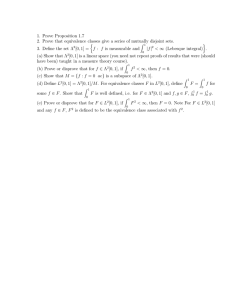
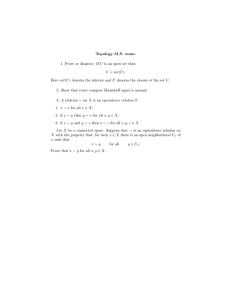

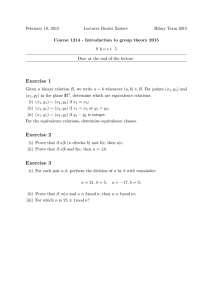

![MA1124 Assignment3 [due Monday 2 February, 2015]](http://s2.studylib.net/store/data/010730345_1-77978f6f6a108f3caa941354ea8099bb-300x300.png)


